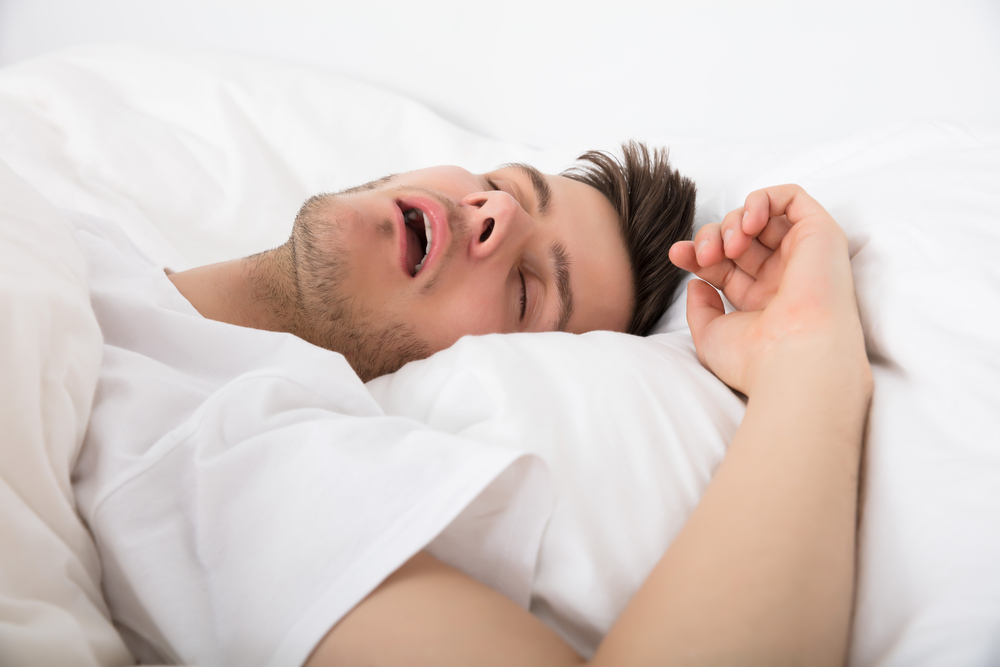
Many people are starting to call our office and ask if we can figure out if they have sleep apnea. Sleep apnea is actually a very complicated problem and requires some detailed analysis to figure out if you really have it. First of all, let’s explain what it means to have sleep apnea. Apnea means a complete and total cessation of breathing for more than 10 seconds while you are asleep. Another aspect of Sleep Disordered Breathing (SDB), is called hypopnea. Hypopnea occurs when you reduce breathing by more than 10 seconds and each time this happens the computer records it as a hypopnea.
The testing that is done for sleep apnea is through a test called a Polysomnogram. This entails hooking you up to a bunch of wires that will analyze sleep quality and snoring as well. It also measures how much desaturation of oxygen occurs and how often. The problem with the Polysomnogram (PSG) is this; let’s say you slow or stop breathing perhaps five times each hour of the night, yet that slowing, or cessation, lasts for several minutes, not just 20 or 30 seconds. Your apnea index will be the same, regardless of whether you stop breathing for 10 seconds or 10 minutes! In other words, you need to look at how long the breathing ceased or slowed to understand how serious the problem is.
When a person performs the PSG, a number called the Apnea Hypopnea Index (AHI), is generated. If that number is 0-5, it is considered mild apnea, and no treatment is indicated. If that number is 5-15, the apnea is moderate, and a CPAP is usually prescribed as the gold standard of treatment. If the apnea index is above 15, then the apnea is considered severe and most definitely the CPAP is required. In many cases, people who have a hard time wearing the CPAP can benefit greatly by wearing a dental appliance that opens and brings the jaw forward. Studies indicate that 93% of the people prefer this over the CPAP. It is easier to wear and much more portable. Carrying that bulky CPAP machine is hard to do when you travel.
Another interesting aspect of sleep apnea is that it often correlates with TMJ disorder. When the jaw joint discs are slipped off, i.e. displaced, this creates chronic inflammation that can tighten up the throat and make the apnea worse. It is my belief that if you are going to go through all the trouble of the PSG and sleep analysis, you really should look at any underlying issues with the TM joints. As it turns out, most people with TMD (TMJ Disorder) also have underlying distortions to their cranial bones (the bones in the skull) and this can cause the neck to turn or twist. The twisting of the neck can then impede the airway. These are all the things we need to look at.
Just to add more to the mix, a critical aspect of sleep involves knowing what your Vitamin D3 levels are. This is important because D3 is actually not a vitamin, it is a hormone, and it controls aspects of your sleep. A simple blood test will reveal your D3 levels. In most people, the D3 is well below the bare bones minimum of 30 ng/ml. This is not healthy, and you simply will not sleep. Your D3 needs to be around 60-80 ng/ml yet most doctors are not really aware of this.
As you can see, dealing with sleep apnea means we need to look at more than just what the PSG tells us. You need to talk to the doctor, then look at the numbers. The more information you gain, the more likely you can get improvements in sleep and overall health!
Getting Help
Dr. Jeffery Brown can help you with your sleep apnea symptoms. Please call our team in Falls Church, Virginia to schedule your consultation. Please call 703-821-1103 today!
